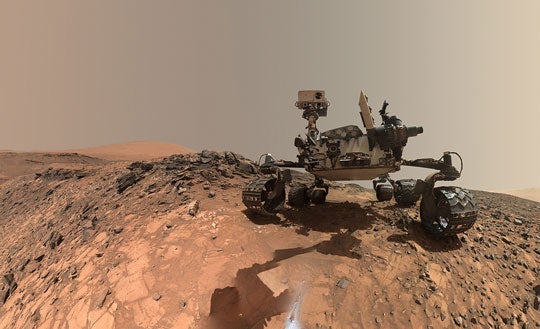
NASA/MAVEN/The Lunar and Planetary Institute
NASA’s Curiosity rover, currently exploring Gale crater on Mars, is providing new details about how the ancient Martian clim...
Read More

NASA’s Curiosity rover, currently exploring Gale crater on Mars, is providing new details about how the ancient Martian clim...
Read More
Scientists aren’t entirely sure how life began on Earth, but one prevailing theory posits that persistent cycles of wet and dry conditions on land helped assemble the complex chemical building blocks necessary for microbial life. This is why a patchwork of well-preserved ancient mud cracks found by NASA’s Curiosity Mars rover is so exciting to the mission’s team.
A new paper in Nature details how the distinctive hexagonal pattern of these mud cracks offers the first evidence of wet-d...
Read More
Researchers publish scenario that explains 2016 discovery by NASA’s Curiosity rover. Planetary scientists from Rice University, NASA’s Johnson Space Center and the California Institute of Technology have an answer to a mystery that’s puzzled the Mars research community since NASA’s Curiosity rover discovered a mineral called tridymite in Gale Crater in 2016.
Tridymite is a high-temperature, low-pressure form of quartz that is extremely rare on Earth, and it wasn’t immediately clear how a concentrated chunk of it ended...
Read More
By studying the chemical elements on Mars today — including carbon and oxygen — scientists can work backwards to piece together the history of a planet that once had the conditions necessary to support life.
Weaving this story, element by element, from roughly 140 million miles (225 million kilometers) away is a painstaking process. But scientists aren’t the type to be easily deterred...
Read More
Recent Comments